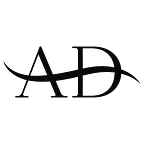Brand ecology.
The only myth worth thinking about in the immediate future is one that talks about the planet. And it will have to deal with exactly what all myths have dealt with: the maturation of the individual, the gradual, pedagogical way to follow, from dependency through adulthood to maturity, and then to the exit and how to do it.
The Power of Myth, Joseph Campbell
You hear someone telling a story. There is something in that story that you just cannot forget. It sticks with you — it makes you oddly excited, it keeps you awake. There is something complex, vast and uncomprehensive to that story. At the same time — something there feels familiar, simple, natural, innate.
This is exactly how I felt listening to Neri Oxman talking about her Material Ecology exhibition in MoMA. Neri Oxman — an architect, scientist, engineer, professor and designer, talks about the matrimony of nature and tech. She talks about computers mimicking nature to design forms that live and die organically. She talks about working with silkworms. She takes guidance from these ancient engineers, allowing them to co-create with artificial intelligence. Why? Because our production of all things artificial has superseded us. The way we design and engineer — it leads towards the extinction phase. We will, she warns, be outlived by concrete and steel.
Let’s set this concept against the creative industry. Have we helped to create systems that made us produce and buy things that make us sick, destroy the environment, cause it to malfunction and eventually — extinct? Have we done all that by promising a happy life and feeling great?
Ironic, isn’t it?
Could we, as part of the new world of creativity, turn to the primal to guide us? Could we re-discover brand ecology?
It is in our primal, social nature to bond, trust and to cooperate. From cooperation, we create, invent, grow, innovate. The collective was there before institutions, industries and agencies. The collective was there for mutual benefit, long before we needed corporate responsibility.
What system is a brand born into, who is the engineer? Is the brand living, breathing and growing organically or is it reproducing the empty promises? We’d all like to know: when does the natural and the authentic turn into the artificial and fake?
Myths, or simply stories, are the primal building material of every society. The glue that binds the collective. These invisible structures, these stories and myths, translate the vast, complex and uncomprehensive into the simple, obvious, innate. Stories are also the building blocks of brands. What makes a story authentic and right? The real stories teach us how to positively change our ways, how to design better systems that benefit all — not just a few. How to build a world where everybody wins, including the environment. There begins and endlessly circulates the brand ecology. There — we do not need debating if we should act. There — we do not need debating authenticity. Actionable and authentic is a natural extension of the story chosen right.
If we believe that what takes place in our mind is not different from the basic phenomenon of life itself, and if we are led to the feeling that there is no gap between mankind and all the other living beings — not only animals but also the plants — then perhaps we will reach more wisdom than we think we are capable of.
Claude Lévi-Strauss, Myth and Meaning
